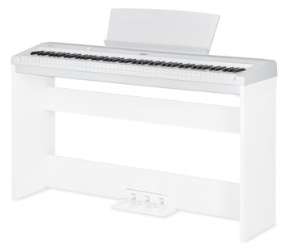How to build a triad on the piano and write it down with notes?
Contents
So, today we will figure out how to build a triad on music paper or on an instrument. But first, let’s repeat a little, what is this very triad in music? Since childhood, since studying at a music school, I remember this verse: “A certain consonance of three sounds is a beautiful triad.”
In any solfeggio or harmony textbook, an explanation of the musical term “triad” will be as follows: a chord that consists of three sounds arranged in thirds. But to fully understand this definition, you need to know what a chord and a third are.
is called the agreement of several musical sounds (at least three), and is such an interval (that is, the distance) between these same sounds, equal to three steps (“third” is translated from Latin as “three”). And yet, the key point in the definition of the word “triad” is the word “” – precisely (not two or four), located in a certain way (at a distance). So please remember this!
How to build a triad on the piano?
It will not be difficult for a person who plays music professionally to construct a triad in a matter of seconds. But we must not forget that there are amateur musicians or those who are simply too lazy to read endless texts about music theory. Therefore, we turn on the logic: “three” – three, “sound” – sound, sound. Next you need to arrange the sounds in thirds. It’s okay if at first this word inspires fear, and it seems that nothing will work out.
Let’s consider the option of building a piano on white keys (we don’t notice the black keys yet). We press any white key, then count from it “one-two-three” up or down – and thus find the second note of this chord out of three, and from any of these two we find the third note in the same way (count – one , two, three and that’s it). See what it will look like on the keyboard:
You see, we marked (that is, pressed) three white keys, they are located one after the other. Easy to remember, right? It’s easy to play from any note and easy to immediately see on the keyboard – three notes one key apart from each other! If you count these keys in order, it turns out that each higher or lower note is the third in its ordinal number in relation to the neighboring one – this is the principle of arrangement in thirds. In total, this chord covers five keys, of which we pressed the 1st, 3rd and 5th. Like this!
At this stage, the sound of the chord does not matter, the main thing is that you managed to overcome the difficulty, and the question of how to construct a triad will no longer arise. You’ve already built it! It’s another matter what kind of triad you came up with – after all, they come in different forms (there are four types).
How to construct a triad in a music notebook?
Building triads by immediately writing them down with notes is no more difficult than on the piano. Everything here is ridiculously simple – you just need to draw… a snowman on the staff! Like this:
This is a triad! Can you imagine? Here is such a neat “snowman” of sheet music. There are three notes in each “snowman” and how are they arranged? Either all three are on the rulers, or all three between the rulers are in contact with each other. Exactly the same – easy to remember, easy to construct and easy to recognize if you see something similar in sheet music. Plus, you already know how it’s played – three notes on one key.
What types of triads are there? Types of triads
Like it or not, here we must resort to musical terminology. Those who do not understand will need to read specialized literature and try to learn the basics. You can even start with a textbook on musical notation, which is given free of charge to everyone as a gift from our website – just leave your details in the form at the top of the page, and we will send you this gift ourselves!
So, types of triads – let’s figure this out too! There are four types of triads: major, minor, augmented and diminished. A large triad is often called a major triad, and a small triad, respectively, a minor one. By the way, we have collected these major and minor triads in the form of piano tips in one place – here. Take a look, it might come in handy.
These four species differ, of course, not only in names. It’s all about the thirds that make up these triads. Thirds are major and minor. No, no, both the major third and the minor third have an equal number of steps – three things. They differ not in the number of steps covered, but in the number of tones. What else is this? – you ask. Tones and semitones are also a unit of measurement of the distance between sounds, but only more accurate than steps (taking into account the black keys, which we previously agreed not to take into account).
So, in the major third there are two tones, and in the minor third there are only one and a half. Let’s look again at the piano keys: there are black keys, there are white keys – you see two rows. If you combine these two rows into one and play all the keys in a row (both black and white) with your fingers, then between each adjacent key there will be a distance equal to half a tone or semitone. This means that two such distances are two semitones, half plus half equals a whole. Two semitones are one tone.
Now attention! In the minor third we have one and a half tones – that is, three semitones; to get three semitones, we need to move across the keyboard four keys in a row (for example, from C to E-flat). There are already two tones in the major third; accordingly, you need to step not by four, but by five keys (for example, from note to note E).
So, from these two thirds four types of triads are combined. In a major or major triad, the major third comes first, and then the minor third. In a small or minor triad, the opposite is true: first the small one, then the major one. In an augmented triad, both thirds are major, and in a diminished triad, it’s easy to guess, both are minor.
Well, that’s all! Now you probably know better than me how to construct a triad. The speed of construction will depend on your training. Experienced musicians don’t even worry about this, they imagine any triad instantly, novice musicians sometimes mess with something, but that’s normal! Good luck everyone!



